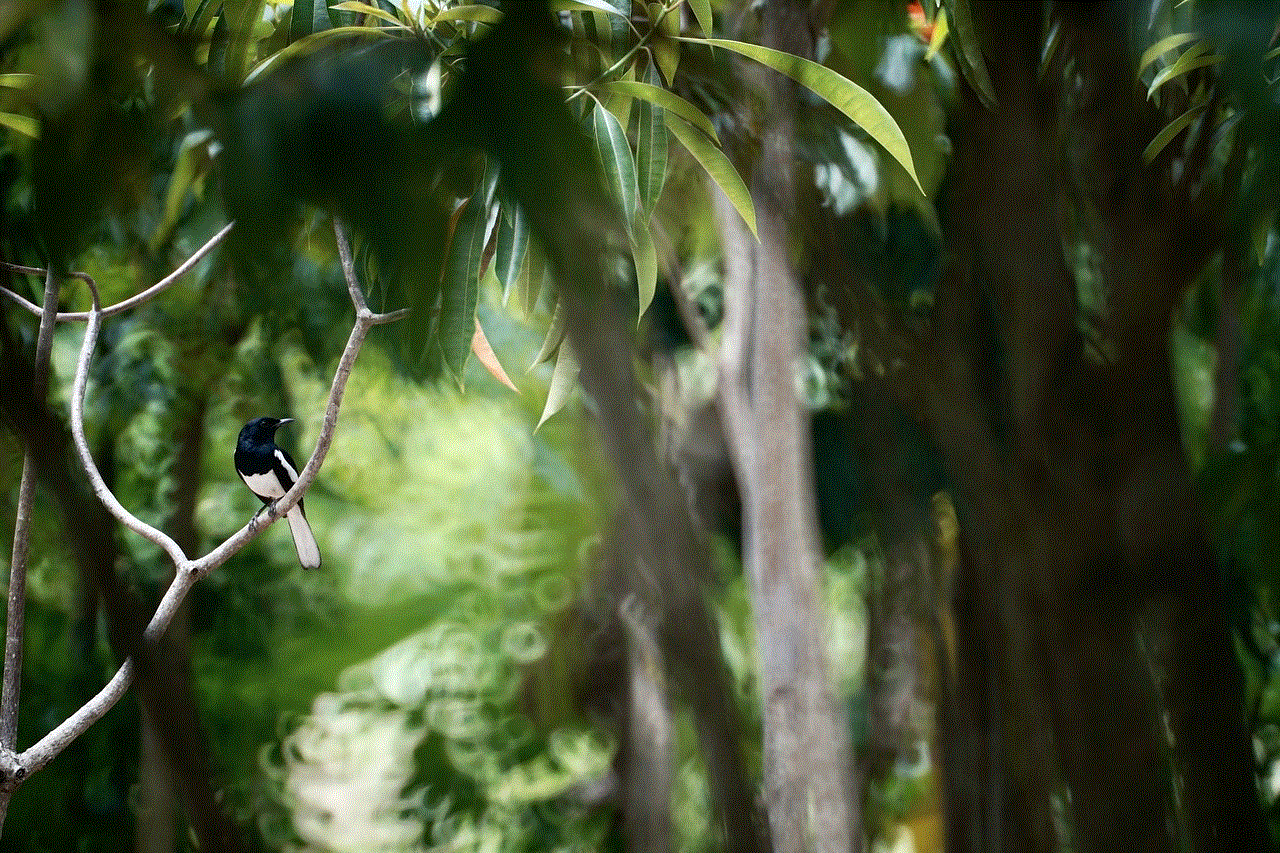how to track a cell phone location using google earth
In today’s technology-driven world, smartphones have become an essential part of our daily lives. We use them for communication, entertainment, and even navigation. And with the rise of various tracking apps and software, it has become easier than ever to track someone ‘s location using their cell phone. One such popular and widely used tool for tracking cell phone location is Google Earth.
Google Earth is a virtual globe, map, and geographical information program that was created by Keyhole, Inc. in 2001 and was acquired by Google in 2004. It uses satellite imagery, aerial photography, and GIS data to provide users with a high-resolution 3D view of the Earth. With the use of this powerful tool, users can explore any location on the planet with just a few clicks. But did you know that Google Earth can also be used for tracking the location of a cell phone? In this article, we will discuss how you can track a cell phone location using Google Earth.
How Does Google Earth Work?
Google Earth uses a combination of satellite imagery, aerial photography, and GIS data to create a 3D view of the Earth. The satellite imagery is collected by satellites orbiting the Earth, and the aerial photography is taken by airplanes equipped with high-resolution cameras. The GIS data is collected by various organizations and government agencies and includes information like roads, buildings, and other geographical features.
When you search for a location on Google Earth, the software uses all this data to create a 3D view of that location, providing users with a realistic and detailed view of the area. You can zoom in and out, rotate the view, and even tilt the view to get a better understanding of the location. It also has features like Street View, which allows users to virtually walk through a location and see it from street level.
How to Track a Cell Phone Location Using Google Earth?
While Google Earth was primarily designed for exploring the Earth, it can also be used for tracking a cell phone location. Here’s how you can do it:
Step 1: Enable location services on the Cell Phone
In order to track a cell phone using Google Earth, you first need to make sure that the location services are enabled on the phone. For this, go to the phone’s settings and look for the location services option. Make sure it is turned on.
Step 2: Download Google Earth App
If you don’t have the Google Earth app already installed on your phone, you need to download it from the App Store or Google Play Store, depending on the type of phone you have.
Step 3: Sign in to Your Google Account
In order to track a cell phone using Google Earth, you need to have a Google account. If you don’t have one, you can easily create it for free. Once you have a Google account, sign in to the Google Earth app using your credentials.
Step 4: Open Google Earth App and Enter the Cell Phone’s Location
After signing in, open the Google Earth app and enter the location of the cell phone you want to track in the search bar. You can enter the address, city, or even the name of the cell phone user if you know it.
Step 5: Use Street View to Get a Closer Look
Once you have located the cell phone’s location on the map, you can use Street View to get a closer look at the surroundings. This will give you a better understanding of the area and can help you track the cell phone more accurately.
Step 6: Use GPS to Track the Cell Phone
Google Earth uses GPS to track the location of a cell phone. This means that the cell phone must have GPS enabled in order for it to be tracked. If the cell phone’s location is not being updated in real-time, try refreshing the page or moving the cell phone to a location where it can get a better GPS signal.
Step 7: Save the Location
If you want to track the cell phone’s location in the future, you can save the location on Google Earth by clicking on the “Save” button. This will allow you to easily access the location in the future without having to search for it again.
Step 8: Use Google Earth Pro for Advanced Tracking
If you want to track a cell phone location with more advanced features, you can use Google Earth Pro. This is a paid version of Google Earth that offers additional features like the ability to import and export GPS data, measure distances, and track multiple cell phone locations at the same time.
Step 9: Use Third-Party Tracking Apps
Apart from Google Earth, there are also various third-party tracking apps available that use Google Earth’s features to track cell phone locations. These apps offer more advanced features and can be used to track the location of a cell phone in real-time. Some popular options include mSpy, FlexiSPY, and Highster Mobile.
Step 10: Consider the Legal Implications



While tracking a cell phone location using Google Earth may seem like a convenient and useful tool, it is important to consider the legal implications of doing so. It is illegal to track someone’s location without their consent, and doing so can result in serious legal consequences. It is important to use this tool responsibly and only for legitimate purposes.
Conclusion
Google Earth is not just a tool for exploring the Earth but can also be used for tracking the location of a cell phone. With its powerful features and easy-to-use interface, it is a popular choice among users for tracking purposes. However, it is important to use this tool responsibly and only with the consent of the person whose location you are tracking. With the rise of technology, it is crucial to respect privacy and use tracking tools with caution.
rabbit face drawing
Rabbits are some of the most beloved animals in the world. They are known for their cute and fluffy appearance, as well as their gentle and timid nature. One of the most iconic features of rabbits is their face, which has been immortalized in art and popular culture for centuries. Drawing a rabbit face is a popular activity for both children and adults, as it allows us to capture the essence of this adorable creature in our own unique way. In this article, we will explore the process of drawing a rabbit face, from the basic shapes to the final details, and provide some tips and tricks to help you create a realistic and charming representation of this lovable animal.
Before we get into the nitty-gritty of drawing a rabbit face, let’s take a closer look at the anatomy of these furry creatures. The face of a rabbit is composed of several distinctive features that give it its unique look. The most prominent of these features are the long, upright ears, the big round eyes, the small nose, and the fluffy cheeks. The overall shape of a rabbit’s face is round and slightly elongated, with a narrow chin and a wide forehead. Keeping these characteristics in mind, we can start the drawing process by sketching the basic shapes that will serve as a foundation for our rabbit face.
To begin, we will need a pencil, eraser, and a piece of paper. It’s important to use a pencil for the initial sketch, as it allows for easier correction and adjustment of the lines. Start by lightly sketching a circle for the head, followed by two more circles for the ears. The ears should be placed slightly above the head and should be approximately the same size. Next, draw two ovals for the eyes, with the top of the ovals touching the top of the head. The eyes should be evenly spaced and slightly larger than the nose. Finally, draw a small triangle for the nose, with the point facing down and located between the eyes. This will serve as a guide for the placement of the facial features.
Now that we have the basic shapes in place, we can start adding more details to our rabbit face. Let’s begin with the ears. Rabbit ears are long and upright, with a slightly curved shape. Start by defining the inner and outer edges of the ears, making sure they are symmetrical and in proportion to the head. Next, add some fur texture to the ears by drawing small lines along the edges, and shading in the inner part of the ears to create some depth. The eyes of a rabbit are one of its most expressive features, so we want to make sure we capture that in our drawing. Start by drawing a small circle in the center of each oval, leaving a small white space in the corner for the highlight. Then, add a curved line above the eyes to create the eyelids, and a small curve underneath for the lower eyelids. To make the eyes appear more realistic, add some shading around the eyelids and the corners of the eyes.
Moving on to the nose, we want to create a small, button-like nose for our rabbit. Start by darkening the triangle we drew earlier, and adding a small curve underneath to create the upper lip. Then, add a small circle at the bottom of the nose for the nostrils, and two lines on either side to define the sides of the nose. To add some texture to the nose, draw some small lines around the nostrils and the bottom of the nose. The cheeks of a rabbit are also an important feature to include in our drawing, as they add to the cuteness factor. Start by adding some fur texture to the cheeks, using short, curved lines. Then, shade in the area between the cheeks and the nose to create some depth and make the cheeks appear more puffy.
Now that we have the basic features of our rabbit face in place, we can start adding more details to make it more lifelike. Begin by adding some fur texture to the head, using short, curved lines. This will give our rabbit a soft and fluffy appearance. Then, add some shading around the face, especially under the eyes and around the nose, to create some dimension. Don’t forget to add some whiskers to your rabbit’s face, as they are an essential part of their anatomy. Draw three or four whiskers on either side of the nose, using short, thin lines. You can also add some longer whiskers near the cheeks for a more realistic look.
To give our rabbit face a more complete look, we can add some details to the background. Draw a curved line at the bottom of the page to represent the ground, and some grass or flowers on either side of the rabbit. This will add some context to our drawing and make it more interesting. You can also add some shading to the background to make the rabbit stand out more. If you want to add some color to your drawing, you can use colored pencils or markers to add some fur tones to the face and the background. You can also use a white gel pen to add some highlights to the eyes and nose, which will make them appear more lively and shiny.
Drawing a rabbit face may seem like a daunting task, but with some practice and patience, anyone can create a charming and realistic representation of this beloved animal. Remember to start with the basic shapes, add some texture and shading, and don’t be afraid to add your own unique touches to make your rabbit face truly one-of-a-kind. Whether you are drawing for fun or as a part of an art project, the process of creating a rabbit face is not only enjoyable but also a great way to improve your drawing skills. So grab your pencil and paper, and let your imagination run wild as you create your very own rabbit face drawing.
toys for kids with autism
Toys play a crucial role in a child’s development, allowing them to explore and learn about the world around them. However, for children with autism, finding the right toys can be a challenge. Children with autism have unique sensory needs, and it is essential to find toys that can help them engage, communicate, and learn. In this article, we will explore the best toys for kids with autism and how they can benefit their development.



1. Sensory Toys
Children with autism often have sensory processing issues, which means that they may be over or under-sensitive to certain stimuli. Sensory toys can help them regulate their senses and improve their sensory processing skills. These toys often have different textures, colors, and sounds, which can engage and stimulate the senses. Examples of sensory toys include fidget spinners, squishy toys, textured balls, and tactile puzzles.
2. Communication and Socialization Toys
One of the core challenges of autism is difficulty with communication and socialization. Toys that promote communication and social skills can be beneficial for children with autism. These toys can encourage them to interact with others, express their thoughts and feelings, and learn about social cues. Examples of communication and socialization toys include board games, puppets, and pretend play sets.
3. Cause and Effect Toys
Children with autism often have a fascination with cause and effect. Toys that demonstrate cause and effect can help them understand how the world works and improve their problem-solving skills. These toys can range from simple toys like building blocks to more complex toys like marble runs and puzzles. They can help children with autism develop their fine motor skills, hand-eye coordination, and critical thinking abilities.
4. Visual Toys
Visual toys can be an excellent tool for children with autism, as they often have a heightened visual perception. These toys can help them improve their visual tracking, recognition, and attention to detail. Examples of visual toys include shape sorters, light-up toys, and picture matching games. These toys can also be used to teach children with autism about colors, shapes, and patterns.
5. Music and Sound Toys
Many children with autism have a deep appreciation and sensitivity to music and sound. Music and sound toys can help children with autism express themselves, improve their auditory processing, and regulate their emotions. Examples of music and sound toys include musical instruments, sound puzzles, and interactive books. These toys can also be used to introduce children with autism to different types of music and sounds.
6. Gross Motor Toys
Children with autism may struggle with gross motor skills, which involve the use of larger muscle groups. Gross motor toys can help them develop these skills and improve their coordination and balance. Examples of gross motor toys include trampolines, ride-on toys, and sports equipment. These toys can also help children with autism build their self-confidence and enhance their physical fitness.
7. Fine Motor Toys
Fine motor skills involve the use of smaller muscle groups and are essential for activities like writing, drawing, and holding utensils. Children with autism may have difficulties with fine motor skills, and toys can help them develop these skills. Examples of fine motor toys include playdough, threading beads, and coloring books. These toys can also improve hand-eye coordination and finger dexterity.
8. Personalized Toys
Every child with autism is unique, and their interests and preferences may vary. Personalized toys can be tailored to a child’s individual needs and interests, making them more engaging and relevant. These toys can range from custom-made puzzles to personalized storybooks. They can also help children with autism feel understood and valued.
9. Technology Toys
Technology has advanced significantly in recent years, and there are now many toys specifically designed for children with autism. These toys use interactive technology to engage children with autism, and many have been shown to improve their social and communication skills. Examples of technology toys for children with autism include speech-generating devices, virtual reality headsets, and educational apps.
10. Multi-Sensory Environments



Multi-sensory environments are designed to stimulate the senses and can be beneficial for children with autism. These environments often include soft play areas, bubble machines, and fiber optic lights, which can create a calming and engaging atmosphere. Multi-sensory environments can help children with autism regulate their emotions, improve their communication skills, and reduce anxiety.
In conclusion, toys play a crucial role in the development of children with autism. The right toys can help them engage, communicate, and learn, while also addressing their unique sensory needs. When choosing toys for children with autism, it is essential to consider their individual preferences and interests, as well as their specific developmental needs. With the right toys, children with autism can have fun, learn, and grow.